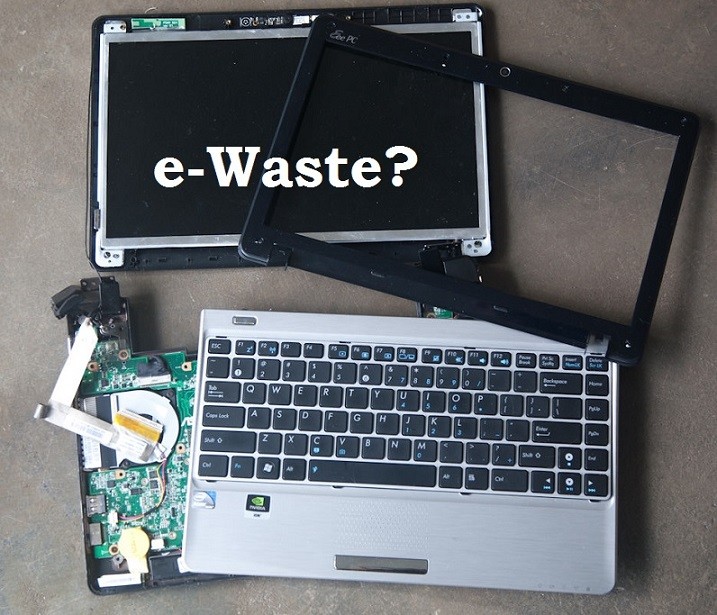Electronic waste is a terminology for electronic products nearing the end of their useful life. We can simply call it as electronic trash. Electronic waste could be harmful, as some electronic products contain materials that are hazardous, depending on their condition. The chemical composition of certain electronic materials poses a threat to human health and the environment. Discarded computers, televisions, refrigerator, drives, fax machines, electric lamps, cell phones, radios, and batteries if improperly disposed of can leak toxic substances like cadmium, lead, copper, chromium and other substances into soil and groundwater. Such types of electronic equipment can either be reused or recycled in an eco-friendly way so that they are less harmful to the environment and human beings.
How harmful is Electronic waste?
- Lead: It is found in batteries, solder and cathode ray tubes (CRTs). Exposure to lead would cause behavioral disturbances, attention deficits, hyperactivity, and lower IQ. These effects have a high impact on the growth of children. They adversely affect the nervous system, causing mental disorder.
- Mercury: It is found in fluorescent tubes, thermostats, and flat screen monitors. Health effects include sensory impairment, dermatitis, memory loss, and muscle weakness. Environmental effects in animals include death, reduced fertility, and slower growth.
- Cadmium: It is found in light-sensitive resistors, corrosion-resistant alloys, and nickel-cadmium batteries. Cadmium can leach into the soil, harming microorganisms and disrupting the soil ecosystem. It can damage lungs and kidney. Cadmium can also affect the growth of children.
- Sulfur: It is found in lead-acid batteries. If it is released in the environment, it can create sulphuric acid through sulfur dioxide which is a dangerous corrosive acid. Sulfur can cause liver damage, kidney damage, heart damage, eye and throat irritation.
- Perfluorooctanoic acid (PFOA): It is found in non-stick cookware. Studies have found increased maternal PFOA levels to be associated with an increased risk of spontaneous miscarriage and stillbirth.
How to deal with Electronic waste?
Certain organizations take care of this E-waste in an ethical, efficient, and eco-friendly way. They provide services to corporates and individuals. Their service includes disposals, asset tracking, residual forecasting, portfolio planning, certified DoD data erasure, IT Asset Recovery/Asset Purchase programs, and comprehensive electronic waste recycling. Certain state law requires the safe disposal of e-waste, therefore, all the organizations should adhere to their policies.
Following are the few organizations providing safe disposal services.
1.e-Waste
e-Waste is an Ohio-based full-service electronic waste recycling and remarketing solutions provider.
The following infographic by Recycle force, explains how it deals with the E-waste.
A&S Metal Recycling, Inc. is one of the largest high volume scrap metal processors in the United States handling all aspects of ferrous, non-ferrous, high-temperature alloy and precious metals recycling. They operate in the United States and Mexico.
A&S Metal offers following services.
- Scrap Metal Consulting and Management
- Scrap Metal Analysis
- Environmental Recovery
- Scrap Processing and Recycling
- Transportation
- Storage
- Buying and Selling
- Hazardous Waste Management
4. Hope Services
5. Ben Lomond Transfer Station
Wrapping up
The United States alone discards 9.4 million tons of e-waste each year and 100 million phones are disposed of in Europe each year. The Environmental Protection Agency (EPA) estimates that only 15–20% of e-waste is recycled, the rest of these electronics go directly into landfills and incinerators. In 2006, the United Nations estimated the amount of worldwide electronic waste discarded each year to be 50 million metric ton. Approximately 350,000 mobile phones are disposed of each day, according to 2010 figures from the EPA.
To tackle with electronic waste, certain countries have taken measures, such as – the sale of Nickel-Cadmium batteries has been banned in the European Union except for medical use. Nonfunctioning CRTs from televisions and monitors are classified as hazardous by California law.
It is everyone’s responsibility to care about the beauty of nature, or at least to maintain it the way it is. We should segregate electronic waste from regular trash. We should hand it over to the services who take care of these waste materials in an organized manner. We should reuse still functioning electronic equipment by donating or selling it to someone who can use it. Recycle those products that cannot be repaired.
Suggested read:
Statistical data credits: Wikipedia.


I m a final year ece student. There is any latest topics for me???
Hi,
You can take a look at Quantum dot and Twistronics
Sir can you suggest me latest topic about electric cars
Comments are closed.